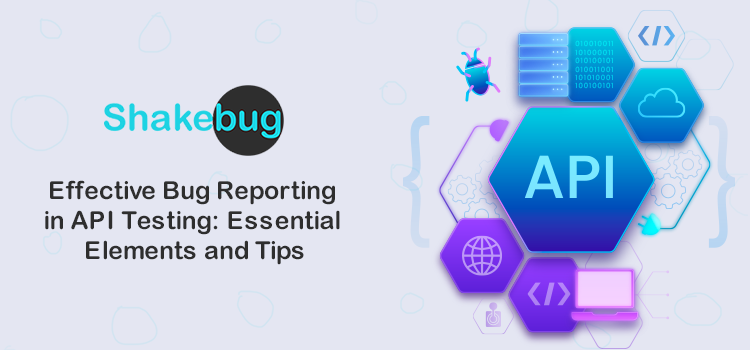Effective bug reporting in API testing is essential for the success of any project. It helps ensure all issues are identified and addressed quickly, allowing developers to focus on creating a quality product.
When writing an effective bug report, it’s important to include specific details about the issue such as what caused it, how often it occurs, and which environment or system was affected.
Additionally, providing screenshots or other evidence can be very helpful when trying to diagnose a problem. Finally, including steps taken so far towards resolving the issue will help speed up the process of finding a solution.
By following these guidelines for effective bug reporting in API testing projects, teams can ensure that their workflows remain efficient and successful.
Clear and Reproducible Steps to Replicate the Bug
Effective bug reporting in API testing is essential for successful debugging. When a tester finds an issue, it’s important to provide clear and reproducible steps to replicate the bug so that developers can quickly identify and fix the problem.
This includes providing detailed information about what was done before encountering the error, as well as any other relevant details such as environment or system settings that could have contributed to the issue. By following these guidelines when submitting bug reports, testers can help ensure that problems are resolved more efficiently and effectively.
Accurate and Detailed Bug Description
Effective bug reporting in API testing is essential for ensuring the quality of a product. An accurate and detailed bug description should be provided when submitting a report, as this will help developers identify and fix the issue quickly.
It’s essential to include information such as what steps were taken that led up to the bug occurring, any error messages or logs associated with it, screenshots if applicable, and other relevant details. This helps ensure that all bugs are properly identified so they can be addressed efficiently.
Inclusion of Relevant Request and Response Data
One important factor to consider when creating a bug report is the inclusion of relevant request and response data. This includes any information sent from the client to the server and any responses received back from the server.
By including this data, it can help developers quickly identify what went wrong with an API call or pinpoint potential problems that may have caused an issue. Additionally, providing detailed logs along with screenshots can also help troubleshoot bugs more efficiently.
Attach Screenshots or Video Recordings for Visual Evidence
Effective bug reporting in API testing is essential for successful product development. One crucial step to take when reporting a bug is to attach screenshots or video recordings as visual evidence of the issue. This can help developers quickly identify and understand what went wrong, allowing them to fix it more efficiently.
Additionally, providing visuals and detailed descriptions can also be helpful for other testers who may need to reproduce the same problem on their machine. Attaching screenshots or videos will provide an accurate representation of any issues that arise during API testing and ensure that they are addressed promptly and correctly.
Specify Expected Behavior and Actual Behaviour
Effective bug reporting in API testing is essential for finding and resolving issues. When writing a bug report, it’s important to specify the expected behaviour of the application as well as what happened. This allows developers to understand exactly where the issue lies and how best to fix it.
Additionally, providing detailed steps on how to reproduce an error can help speed up resolution time by allowing developers to replicate the problem more quickly. By following these guidelines when submitting a bug report, you will be able to ensure that your bugs are resolved efficiently and effectively.
Indicate the Impact and Severity of the Bug
When reporting a bug in API testing, it is important to indicate the impact and severity of the bug. This will help developers prioritise fixes for their APIs more effectively. For example, if you report that an API call returns incorrect data but does not affect any other functions or features then this would be considered low severity as opposed to a critical issue where an entire system crashes due to one faulty API call.
Additionally, indicating how many users were affected by the bug can also give developers insight into its true impact and allow them to make better decisions when deciding which bugs need fixing first.
Include Environment and Configuration Information
When it comes to effective bug reporting in API testing, one of the most important things is to include environment and configuration information. This includes details such as what operating system was used for the test, which version of the application under test (AUT) was being tested, any other software that may have been running at the same time during testing, etc.
Having this kind of detailed information can help developers quickly identify and fix bugs more efficiently. Additionally, providing a clear description of how you were able to reproduce an issue will also help resolve issues faster.
Provide Relevant Logs and Error Messages
Effective bug reporting in API testing is essential for successful debugging and resolution. Providing relevant logs and error messages can help developers identify the root cause of a problem quickly, saving time and resources. Logs should include detailed information such as request headers, response codes, parameters used, etc., to give an accurate picture of what happened during the test run.
Error messages should also be included so that developers have more context about why something failed or didn’t work correctly. This will allow them to pinpoint exactly where the issue lies and provide solutions accordingly.
Collaborate with Developers and Testers for Bug Triage
Effective bug reporting in API testing is essential to ensure the success of any project. Testers and developers need to collaborate on bug triage, which involves identifying, prioritising, and resolving bugs as quickly as possible.
This requires both sides to work together closely so that they can identify potential issues before they become major problems. By working together collaboratively, teams can more effectively detect problems early on and prevent them from becoming larger issues down the line.
Follow Up and Track Bug Resolution Progress
Effective bug reporting in API testing is essential for successful software development. It’s important to follow up and track the resolution progress of any bugs that are reported, as this will help ensure they are fixed quickly and efficiently. This can be done by creating a tracking system which allows developers to easily identify issues and assign them to the appropriate team member or department for resolution.
Additionally, it’s also beneficial to have an automated process in place so that all reports are logged accurately and tracked effectively over time.
Conclusion
In conclusion, effective bug reporting in API testing is essential for the success of any project. It helps to ensure that all issues are identified and addressed quickly so that development can continue without interruption. The process should be well documented with clear steps on how to report a bug as well as what information needs to be included in the report. By following these guidelines, teams will have an efficient and reliable way of tracking bugs throughout their projects.


